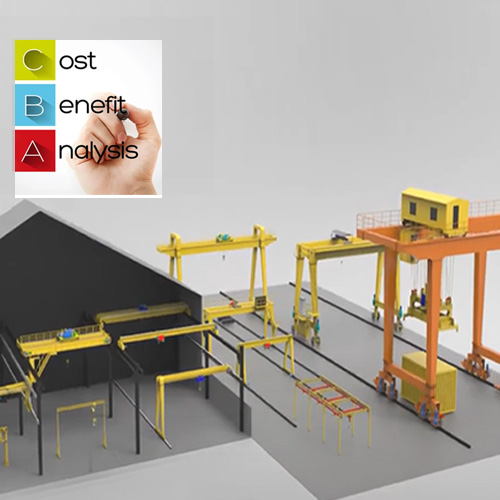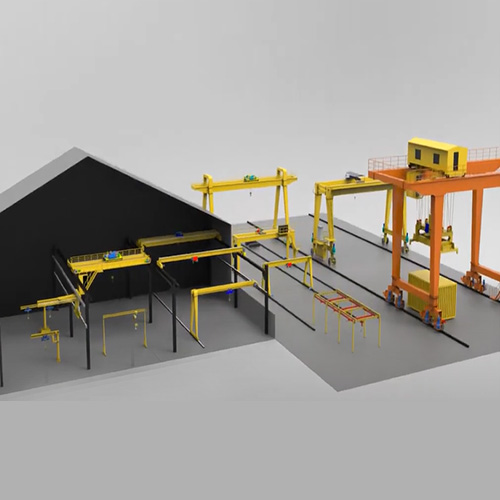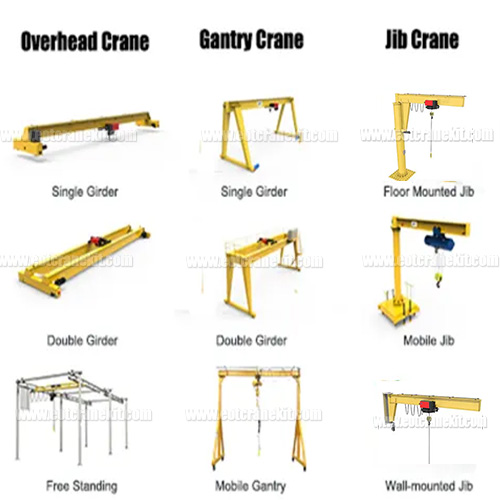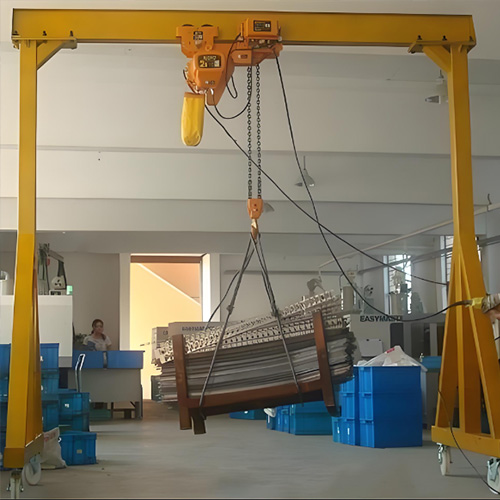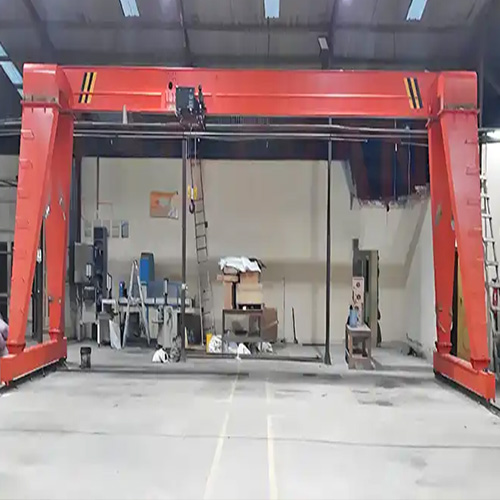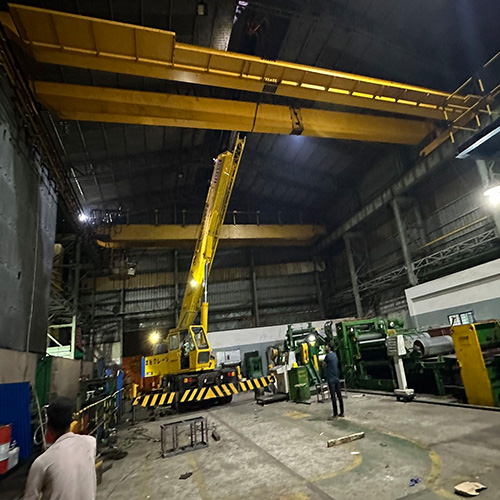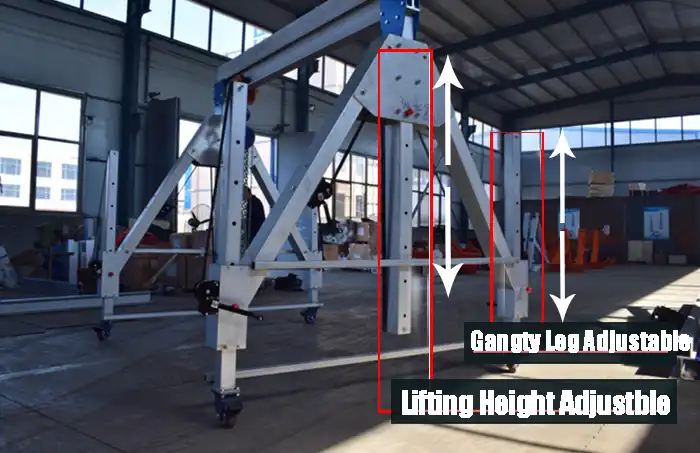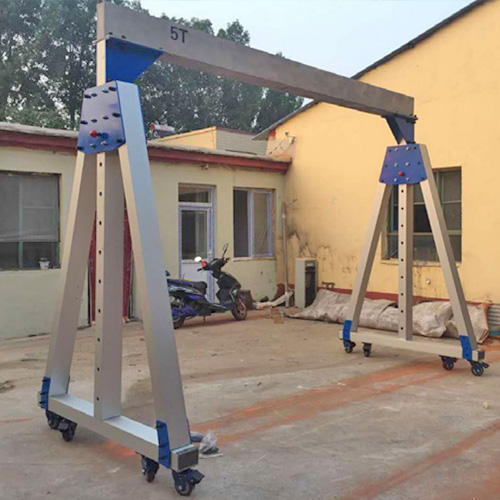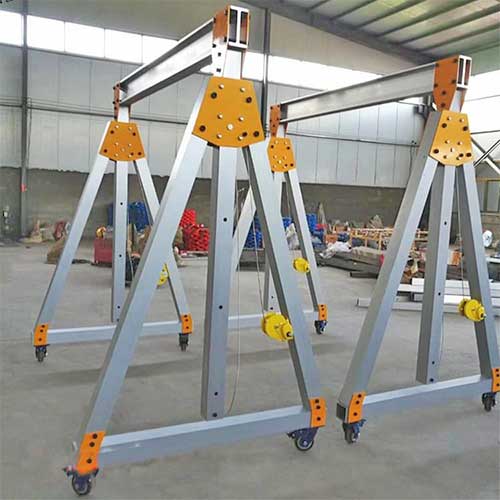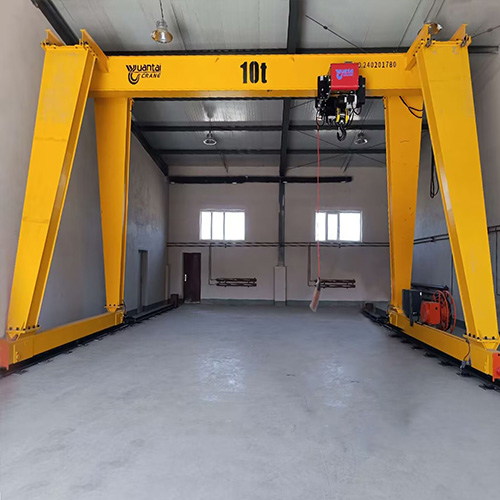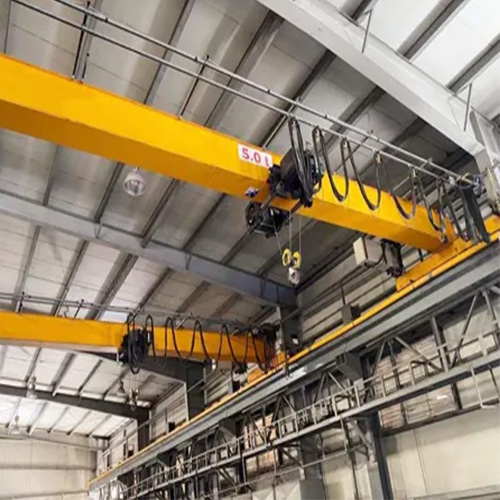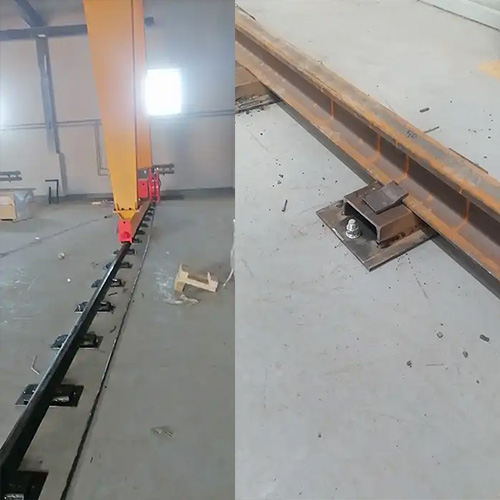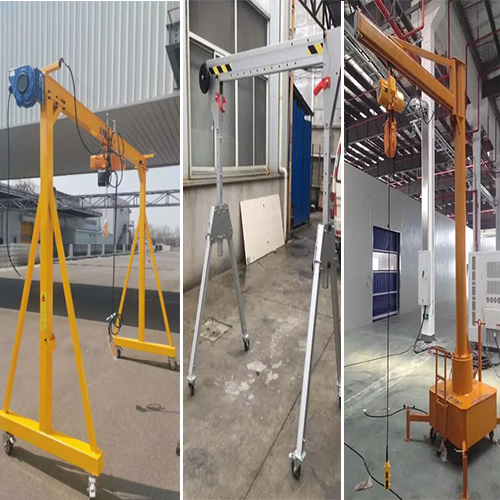
Crane Brake & Crane brake System for Overhead Crane & Gantry Crane
Crane brake system for overhead cranes, gantry cranes & open winch cranes. Crane brake is a vital crane parts & components for crane safety. Read on crane brake system now!
Crane must frequently start, brake, or stop. As a result, a good and dependable crane brake device is required. The crane brake system is separated into two parts: brake and stop. Support, speed regulation or speed limit, and braking are all features of the crane brake system.Crane brakes are positioned on the motor's shaft and are used to halt the motor's operation or hoisting mechanism accurately and reliably at a predefined location. Crane brakes have become an essential component of any power-driven crane system.
Crane brakes serve as a safety device as well as a means of controlling the crane. Crane brakes allow a crane to control its vertical motion as well as the raising or lowering of items, allowing it to stop safely at a specified height. The crane brake is also used in the crane traveling or luffing mechanism, allowing the mechanism to halt at a pre-determined place.
Applications of crane brakes
Crane brakes can be used in a variety of industries, including transformers, storage and logistics, machining, aerospace, nuclear power, waste management, automobiles, papermaking, wind energy, steel, metallurgy, material handling, nuclear power, and petrochemicals.
Crane brakes for ladle crane with open winch
Functions of crane brake
The following are the functions of the crane brake device: Braking; Support; Speed regulation or speed limit.
Transformer, storage and logistics, machining, nuclear power, aerospace, nuclear power, wind power, car, waste management, papermaking, steel, material handling, metallurgy, and petrochemical industries can all benefit from crane brakes.
Basic requirements for crane brake
The crane brake must meet the following fundamental specifications:
- A. To meet the criteria, crane braking torque can be generated.
- B. The crane brake and crane brake work swiftly and consistently, and the operation is precise and dependable.
- C. Friction parts have strong wear resistance and heat resistance.
- D. Small size and compact structure.
- E. It is simple to adjust and maintain the system.
According to structure, crane brakes are classified as structure, block type, belt type, and disk type; there are two types of typically closed and normally open crane brakes.
Crane brake is normally closed when the machine is not in use; when the machine is in use, the crane brake is released.
Crane brakes with an open type are frequently in the release condition and are only used when necessary.
Crane brakes for overhead crane & gantry crane
Structure and type of block crane brake
Advantages: The block crane brake structure is simple, easy to install and adjust, and is extensively utilized in a variety of electric cranes.Electromagnetic block crane brakes and hydraulic crane brake blocks are the two types of block crane brakes.
There are two types of electromagnetic crane brake blocks: short distance and long distance.
(1) electromagnetic block crane brake
Crane brake with a short stroke electromagnetic block
- Advantages: crane brake action is swift; small volume and light weight; the hinge less death stroke is small; and the crane brake pad crane brake arm, crane brake pad, and crane brake wheel contact wear uniformly, uniformly.
- Disdvantages: suction is limited, it is frequently used in smaller institutions for braking, and the crane brake wheel diameter is not higher than 300 mm.
As a result, the electromagnetic block crane brake must have a lengthy stroke when the crane brake torque is high.
Electromagnetic block crane brakes have a significant disadvantage over hydraulic block crane brakes in that the electromagnet has a large impact on the mechanism of vibration.
The service life of the electromagnet is diminished due to repeated starting, braking, and electromagnet collision, thus it must be overhauled and replaced periodically.
(2) Hydraulic push rod crane brake pad
In hydraulic push rod crane brake pads, the hydraulic push rod releaser is a separate component of the hydraulic rod that is divided into two types: electric hydraulic push rod and electromagnetic hydraulic push rod.
Push rod with an electric hydraulic motor:
- Advantages: smooth movement; high engagement per unit time; steady push; low motor power.It is not appropriate for lifting mechanisms due to the huge inertia of the motor rotor and lever system, as well as the long time it takes to stop and release the crane. Both hydraulic and electromagnetic crane brakes have two advantages: stable braking, no noise, dependable work, and long life.
- Disadvantages include a complex structure, expensive cost, tough maintenance, and limited popularity and application.

Crane hydraulic brake VS Electromagnetic safety brake
Items | Hydraulic brake SBD100 | Electromagnetic safety brake AP75/30 |
Braking principle | Oil pressure release is provided by hydraulic station, and friction braking is applied by spring | When no accident occurs to the loads or object handled, the brake only slightly clamps the brake disc. When an accident occurs, driven by the clamping friction, the two wedge-shaped sliding blocks enter the dovetail groove by the inertial self-locking brake to clamp the brake disc. |
Brake opening power source | Hydraulic station | Electromagnetism |
Installation and commissioning | Complex installation, including oil pipe, oil valve, etc | Simple installation |
Weight | Dead weight 230kg | Dead weight 50kg |
Energy consumption | 1500w | 10w |
Braking force | 73Kn | 75Kn |
Maintain | There is oil leakage and regular maintenance is required | No hidden danger of oil leakage, no maintenance of oil pipe and hydraulic station |
Security | Commonly | High |
Applicable temperature | There are restrictions on temperature and obstacles to ultra-low temperature operation | Can be used at ultra-low temperature |
Volume | With hydraulic station, it is large and takes up certain space | Compact size, not occupying space |
|
|
|
Safe use of crane brakes
The crane brake's dependability is crucial. The crane brake's construction and functioning must first be grasped. The problem and its causes must be obvious. It must be inspected and maintained on a regular basis.
(1) Common problems and their causes
- a. Inadequate braking torque:
- Oil stain or loose main spring between crane brake belt and crane brake wheel; Some parts are stuck, worn, loose, and so on, such as moveable hinge clamping, locking nut loose, resulting in adjustment lever loose; The slack crane brake drive system is inflexible.
- b. The crane brakes failed unexpectedly:
- Crane brake belt has severe wear or damage; the long stroke electromagnet has become stuck or the rod has become stuck between the armature and the horizontal lever.
Main spring failure or damage to the crane brake main parts; hydraulic push rod or hydraulic electromagnetic push rod not moving; electrical failure, and so on.
(2) Crane brake inspection and maintenance
When a new operation begins, the crane brake for the lifting mechanism must be checked; the crane brake for the running mechanism should be checked every two to three days.
Inspection under duress: Crane braking transmission system; crane braking wheel; crane braking belt; crane braking lever system; hydraulic system
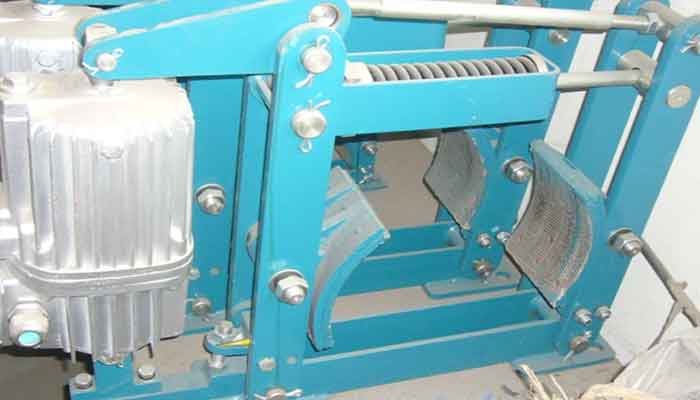
(3) Safe use of crane brakes
- Before using the crane brake, the braking distance, braking torque, and lifting weight must all be evaluated, and the work can only begin after the normal operation has been confirmed.
- The suspension item or automobile body should have a sliding distance within the unit period, that is, the inertia stroke, after the crane brake is closed.
- When raising a rated load, the inertial travel is referred to as braking distance.
- The braking distance is around 7% of the running speed (m/min) when using this system.
- Braking distance is around 1% of the lifting speed (m/min) in the lifting mechanism.
- The crane brake must be capable of withstanding 1.25 times the rated weight reliably.
Before each job, the object should be lifted 100–200 mm above the ground to ensure that the crane brakes are working properly. You can begin the surgery once the normal has been confirmed.
Crane Stop
Support function; backstop effect; overrunning clutch function are the main functions.
The following types of stops are commonly used: ratchet wheel, roller type, and belt type.
FAQ on crane brakes and maintenance
Crane brakes are an essential component of all crane types for crane safety, and they must be checked once every shift. For your convenience, we've compiled a list of frequently asked questions about crane brake maintenance.
The braking torque is reduced.
This is because if the crane brake wears to half the thickness of the original belt, the main spring progressively relaxes or the crane brake bracket of each hinge point wears to causes such as hole or shaft wear is too large.
When the pin shaft wears more than 5% of its original diameter, ovality must be replaced by more than 1mm, and hole wear is more than 5% of the original aperture, reamer reaming is available, and corresponding pins must be made.
If the hole wear is severe, reaming jacketed or pastry processing holes can be employed to fix the hole after welding.
The crane brake is unable to open it.
It could be due to the hinge point card death, the main spring force is too great, hydraulic push rod hydraulic solenoid or lack of oil or air in the cylinder no is put, coil burned or rectifier component, there is something wrong with the line, the voltage is too low, and it should be repaired as soon as possible after determining the cause. Braking each hinge point with thin oil pouring once a week reduces wear and allows for more flexible rotation.
The crane brake abruptly fails.
This could be due to a spring failure or damage, long stroke crane brake core on the bracket or frame, connection electromagnet and traction bar connection plate of small shaft slipping out, make a connection plate back down on the frame, hydraulic push rod pressure on the shell, or crane brake bracket, the crane brake can not hold brake wheel and cause, in addition to the replacement.
Maintenance of crane brake
- The articulated point's crane brake should be checked on a regular basis, at least once a week, depending on the lubrication state.
- Working in a high-temperature lubrication environment once every three days. The lubricating oil cannot be dipped into the Crane brake lining or the Crane brake wheel surface.
- Keep a safe distance between the Crane brake lining and the filth on the Crane brake wheel.
- Once every six months, change the oil in the hydraulic push rod segment or the Crane brake drive.
- If oil with mechanical impurities is discovered, the device should be completely opened, the parts washed with gasoline, and then reassembled. Before assembly, the sealing ring should be cleaned with clean oil infiltration to ensure the sealing performance after installation. When cleaning the coil, however, gasoline is not permitted.
How often should I replace brake pads on my overhead crane ?
A crane brake is a mechanical mechanism used in overhead cranes and gantry cranes to control their movement and assure the crane system's safety.

Crane Brake Components
The frequency with which brake pads on an overhead crane are replaced is determined by various factors, including the type of crane, its usage, the environment, and maintenance approaches. It is critical to adhere to the manufacturer's recommendations and guidelines for the crane model you are operating.
As a general guideline, replace the brake pads when they have 2mm of wear or have lost 50% of their original thickness. However, you should also test the brake pads and other components on a regular basis to establish the right replacement plan.
What are the factors that may affect the pad replacement frequency?
The following factors may influence the frequency of replacement:
- Usage: Excessive or continuous use might cause brake pads to wear out faster, necessitating more frequent replacements.
- Environmental factors: Brake pad wear can be accelerated by exposure to extreme environmental conditions such as dust, dampness, and corrosive chemicals. Consider the environment in which your crane operates and alter your maintenance schedule accordingly.
- Maintenance history: Regular maintenance might help your brake pads last longer. Maintain a record of all maintenance activities and brake pad replacements to assist in identifying patterns and optimizing the replacement schedule.
To guarantee the safe and efficient functioning of your overhead crane, always prioritize routine maintenance and follow manufacturer requirements.
How to replace the brake pads?
When it comes time to change the brake pads on your overhead crane, follow these steps to ensure a proper and safe job:
- Turn off the crane and lock out/tag out the power source: Before beginning any maintenance work, turn off the crane and separate it from the power source. To avoid accidental energizing during the maintenance operation, use the lockout/tagout protocols.
- Access the brake assembly: Follow the manufacturer's instructions to locate and access the brake assembly. Ladders, platforms, and other access equipment may be required.
- Loosen the brake screws and slightly loosen the central spring tension: Loosen the single-sided brake screws on both sides and slightly loosen the central spring tension.
- Remove the brake pad holders: Remove the brake pad holders on both sides by turning the central limit screw. This will make enough room for you to remove the old brake pads and replace them.
- Remove the old brake pads: Remove the worn brake pads from the brake pad holders with care. Dispose of them correctly, in accordance with any applicable legislation or recommendations.
- Install the replacement brake pads: Place the new brake pads in the brake pad holders, making sure they are properly and evenly inserted.
- Adjust the screw and spring tension: Make necessary adjustments to the screw and spring tension. It should be neither too big nor too small. This step is critical to ensuring that the brake system works properly.
- Inspect the brake assembly: Before reassembling the brake assembly, inspect it for signs of wear, damage, or corrosion. As needed, replace or repair any damaged components.
- reinstall the brake assembly and restore power: Once you've finished replacing the brake pads, reinstall the brake system according to the manufacturer's directions. After everything is in place, remove the lockout/tagout devices and reconnect the crane to power.
- Inspect the crane's braking system: Before resuming regular operations, inspect the braking system to ensure it is in good working order. If you find any problems throughout the test, make any necessary adjustments.
- To guarantee the safe and efficient functioning of your overhead crane, remember to follow the manufacturer's specifications and prioritize regular maintenance.
Please contact us for more information about crane brakes, overhead cranes, gantry cranes, jib cranes, electric hoists, electric winches, and other forms of lifting equipment or crane parts.


